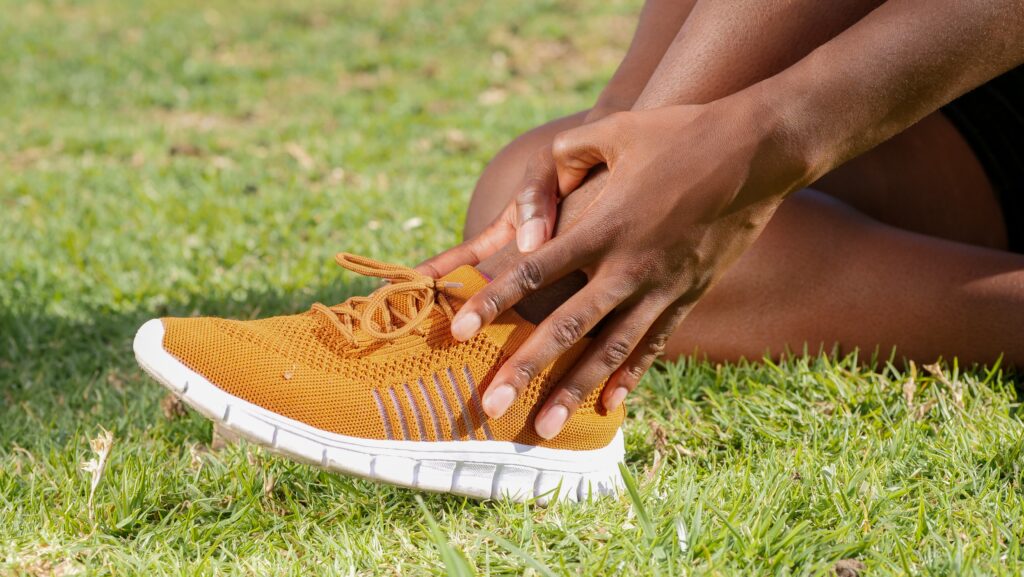How are Ankle and Hip Pain Related?
Dealing with chronic ankle pain that won’t go away? Wondering if it’s related to your hip or knee? Don’t worry, you’re not alone. Issues in one area can affect others, causing discomfort in your hips, knees, back, neck, or even shoulders. In this blog post, we’ll explore how lower body pains are connected, including the causes of ankle discomfort and treatment options. Whether you need physical therapy or simple stretching exercises at home, this article will be a great starting point to ease your foot and leg aches.
How Are They Connected
Ever wondered why hips and ankles are vital? They’re crucial for mobility, walking, running, dancing, and even standing still. Plus, they’re anatomically connected. The ankle joint provides foot movement and stability, while the hip joint is crucial for leg movement and balance. Understanding this connection helps us move with ease and grace. Appreciate their hard work next time you take a step!
How Injuries in One Area Can Cause Pain Elsewhere
Have ever experienced the peculiar phenomenon of feeling pain in one part of your body when it’s actually injured in another? Surprisingly, this is not uncommon. In fact, there is an entire field dedicated to exploring how injuries in one area can manifest as pain elsewhere. Our intricate nervous system allows for the crossing of pain signals, resulting in nerve pain in unrelated regions. For instance, a knee injury might culminate in hip discomfort or even headaches. The intricate interconnectedness of our bodies is truly fascinating, and comprehending this phenomenon can prompt the development of superior treatment options for chronic pain and injuries.
Exercises You Can do for Your Ankles and Hips
Are you tired of feeling unsteady on your feet? Do you want to prevent injuries and feel stronger during physical activities? It’s time to start working on those ankle and hip muscles! Try incorporating exercises like calf raises, ankle circles, and squats into your workout routine to build up those stabilizing muscles. Not sure where to start? Look up some online tutorials or consider working with a personal trainer who can guide you through the process. With consistent effort and dedication, you’ll notice improvements in your balance and overall mobility in no time. Strong ankles and hips, here we come!
Treatments That Can Help Alleviate Ankle or Hip Pain
Ever the agony of ankle or hip pain? It can be debilitating, but fear not! Therapeutic treatments can work wonders in easing the pain. Physical therapy involves exercises to strengthen the affected area’s muscles, ideal for those with chronic pain or injuries. Acupuncture, with needles inserted into key points, helps release tension and reduce inflammation. Massage therapy relaxes tight muscles and increases circulation, providing relief. Choose your route to comfort!
Tips for Taking Care of Your Feet
We all know how important it is to take care of our feet, but did you know that it can also help reduce the chances of ankle and hip pain? It’s true! And trust me, as someone who has suffered from both, I know firsthand how debilitating it can be. So, what can you do to keep your feet happy and healthy?
First and foremost, invest in a good pair of shoes that fit well and provide adequate support. Your feet will thank you, and so will your ankles and hips. Secondly, make sure to stretch your feet and ankles regularly, especially if you’re on your feet a lot. And last but not least, don’t be afraid to pamper your feet with a little TLC from time to time. A nice foot massage or soak can do wonders for both your physical and mental well-being. By following these simple tips, you can keep your feet happy, healthy, and pain-free!
Conclusion
Understanding the close link between ankle and hip pain is crucial for effective treatment. With a solid grasp of anatomy, pain patterns, and preventive care, you can reduce or prevent discomfort through targeted exercises, therapeutic treatments, and lifestyle adjustments. Real-life success stories have shown how individuals achieve better mobility and comfort by caring for their bodies. Open communication between medical practitioners and patients is vital to create tailored treatment plans addressing individual needs.

